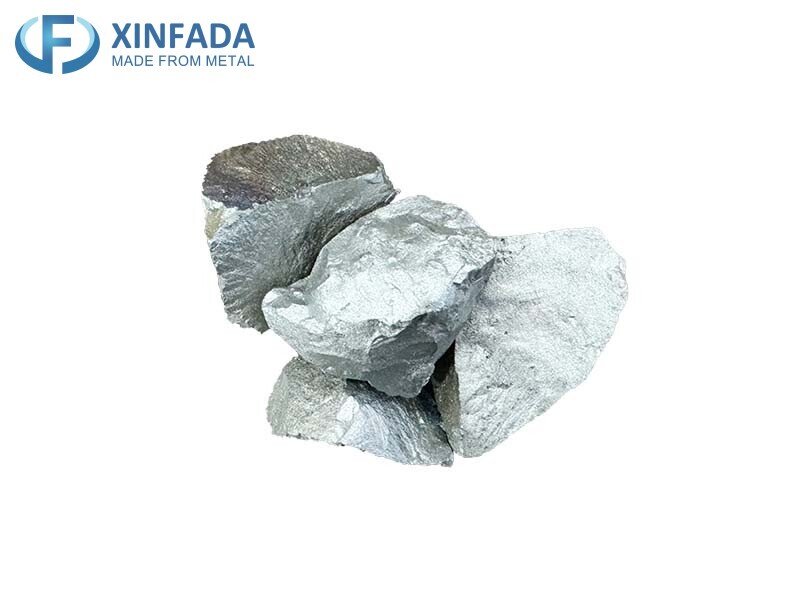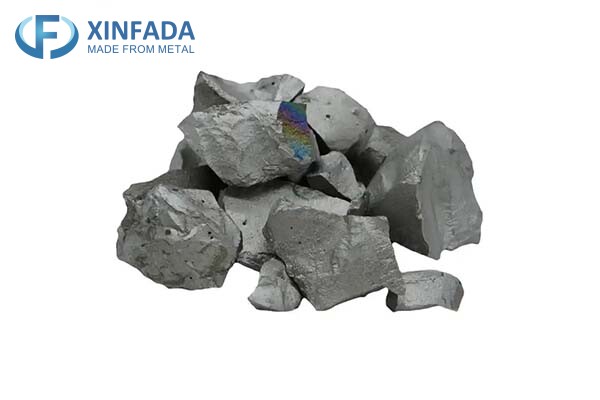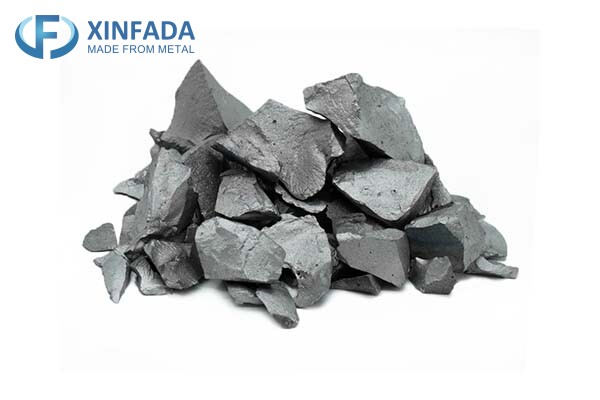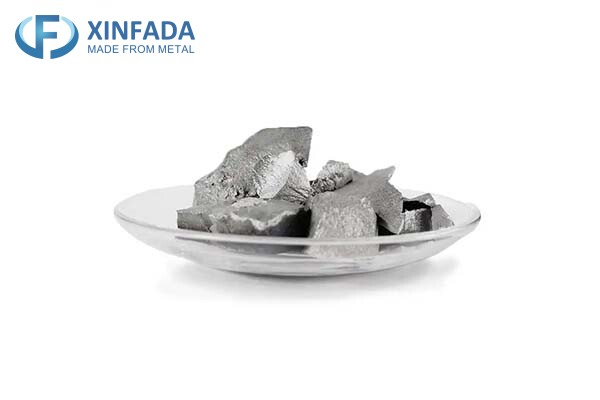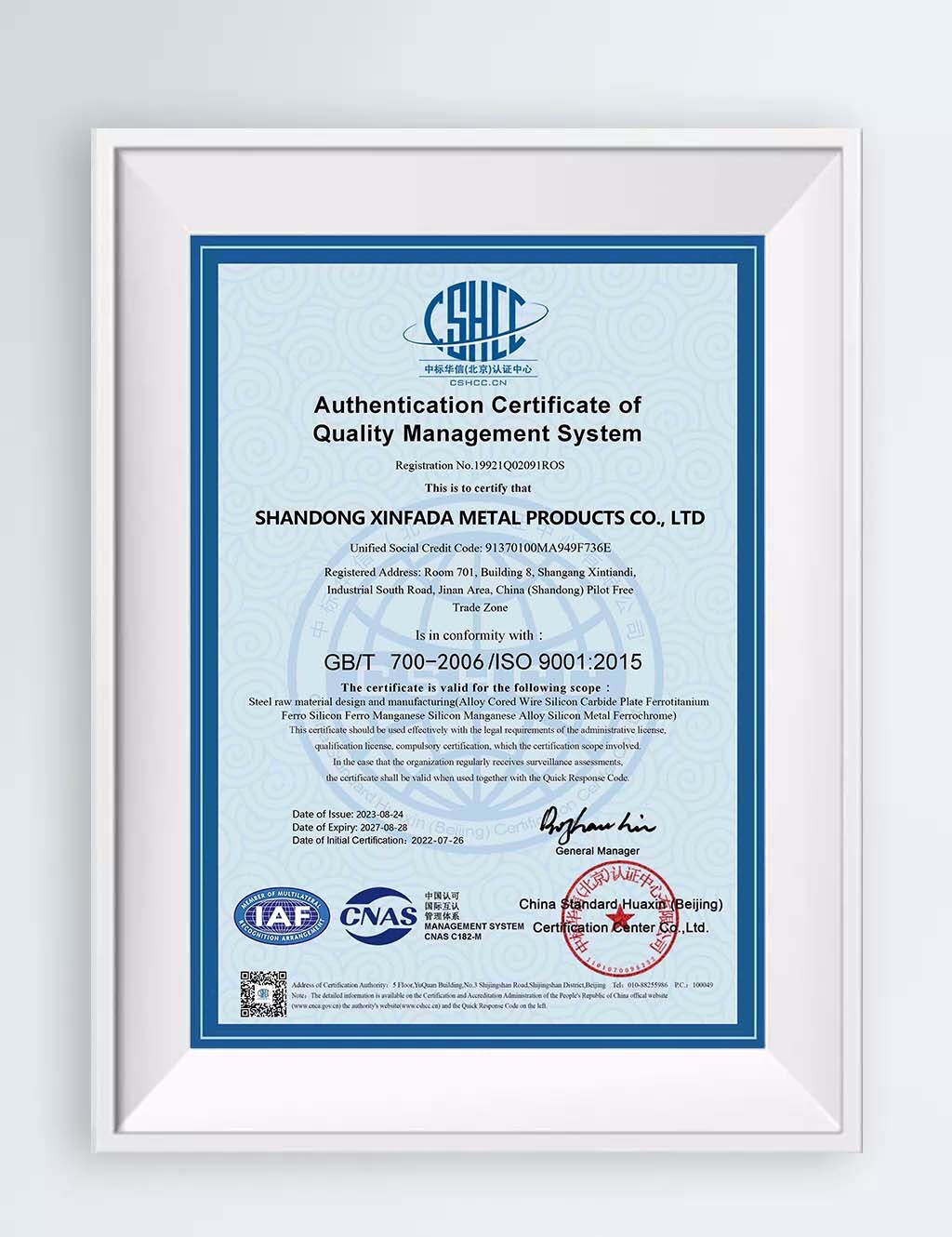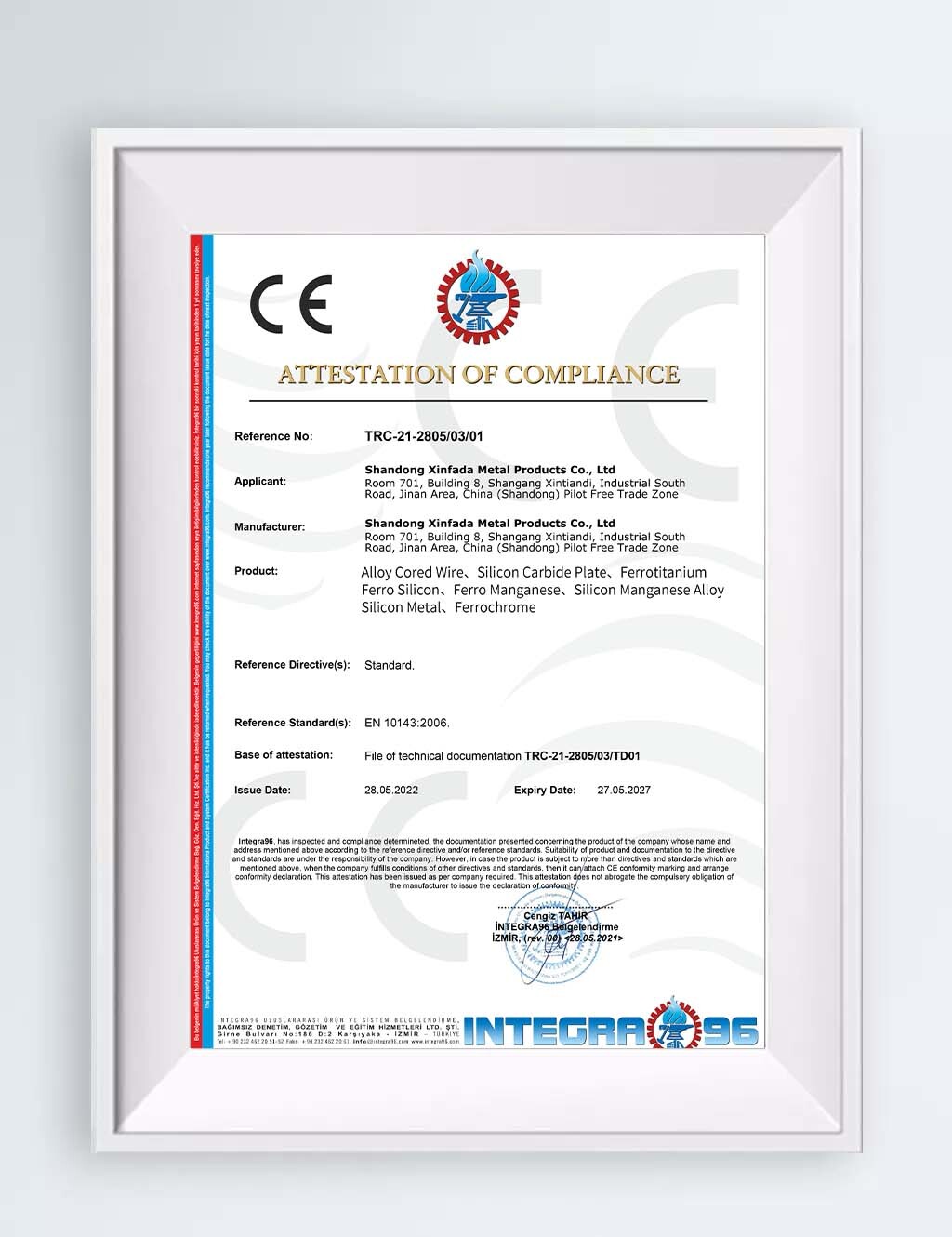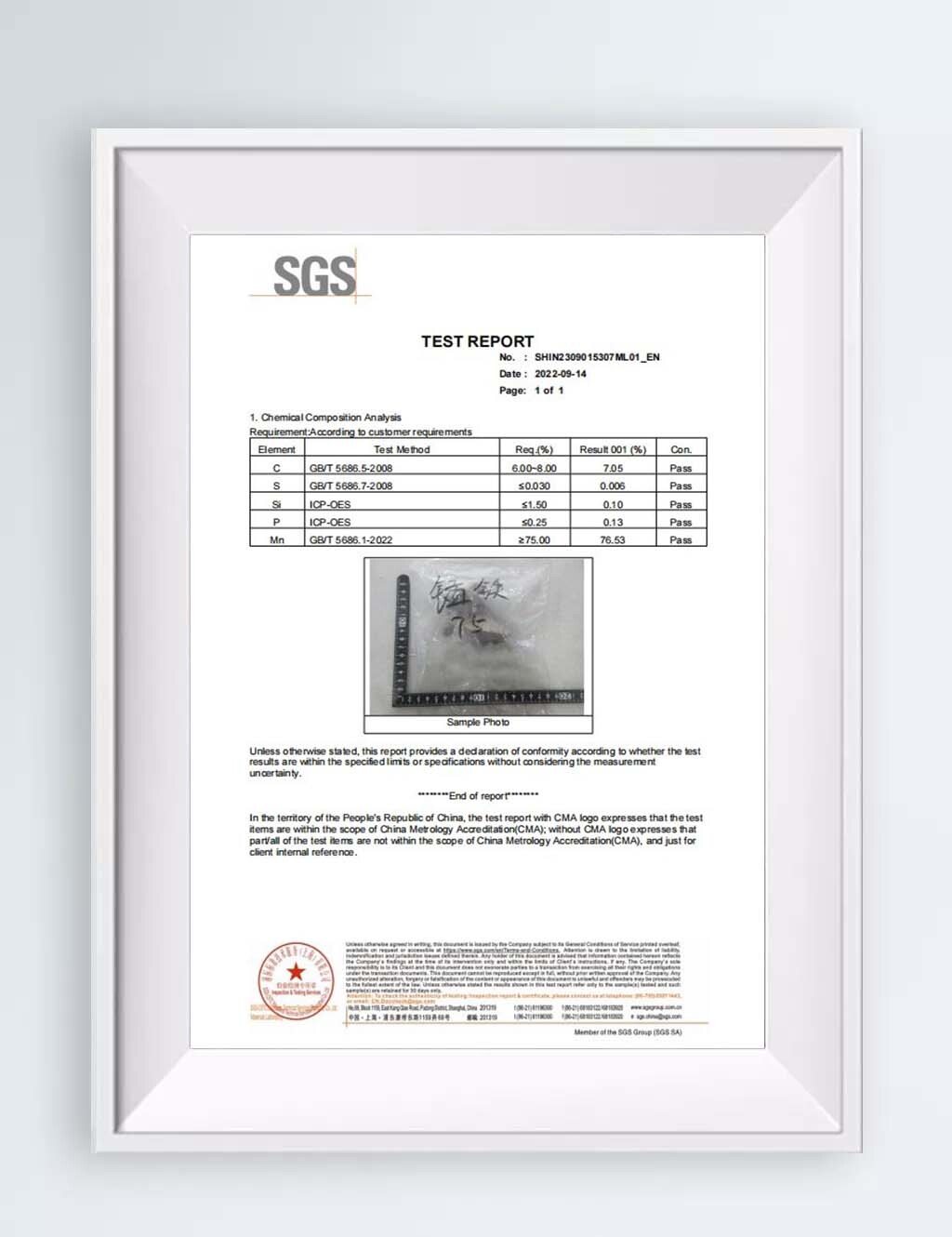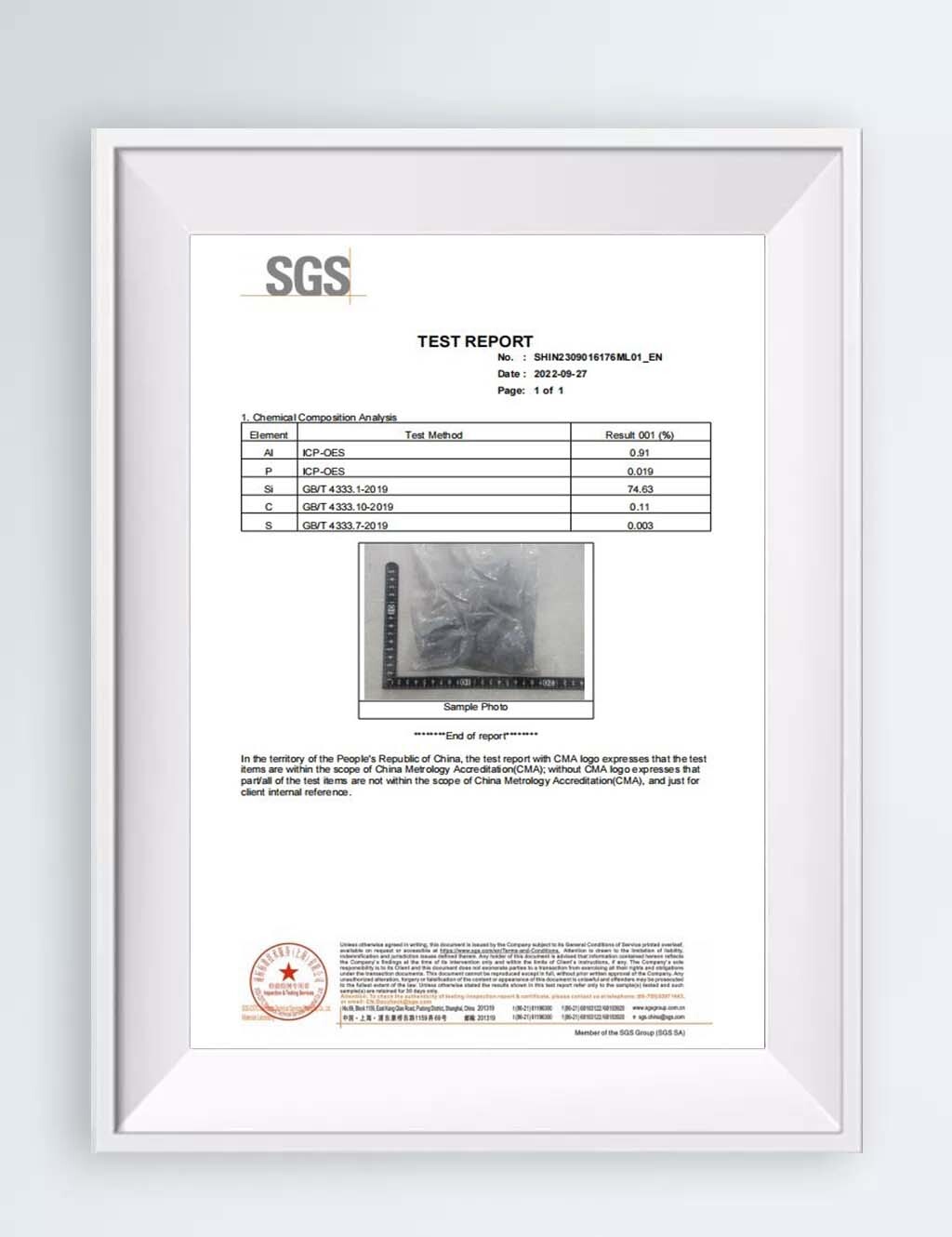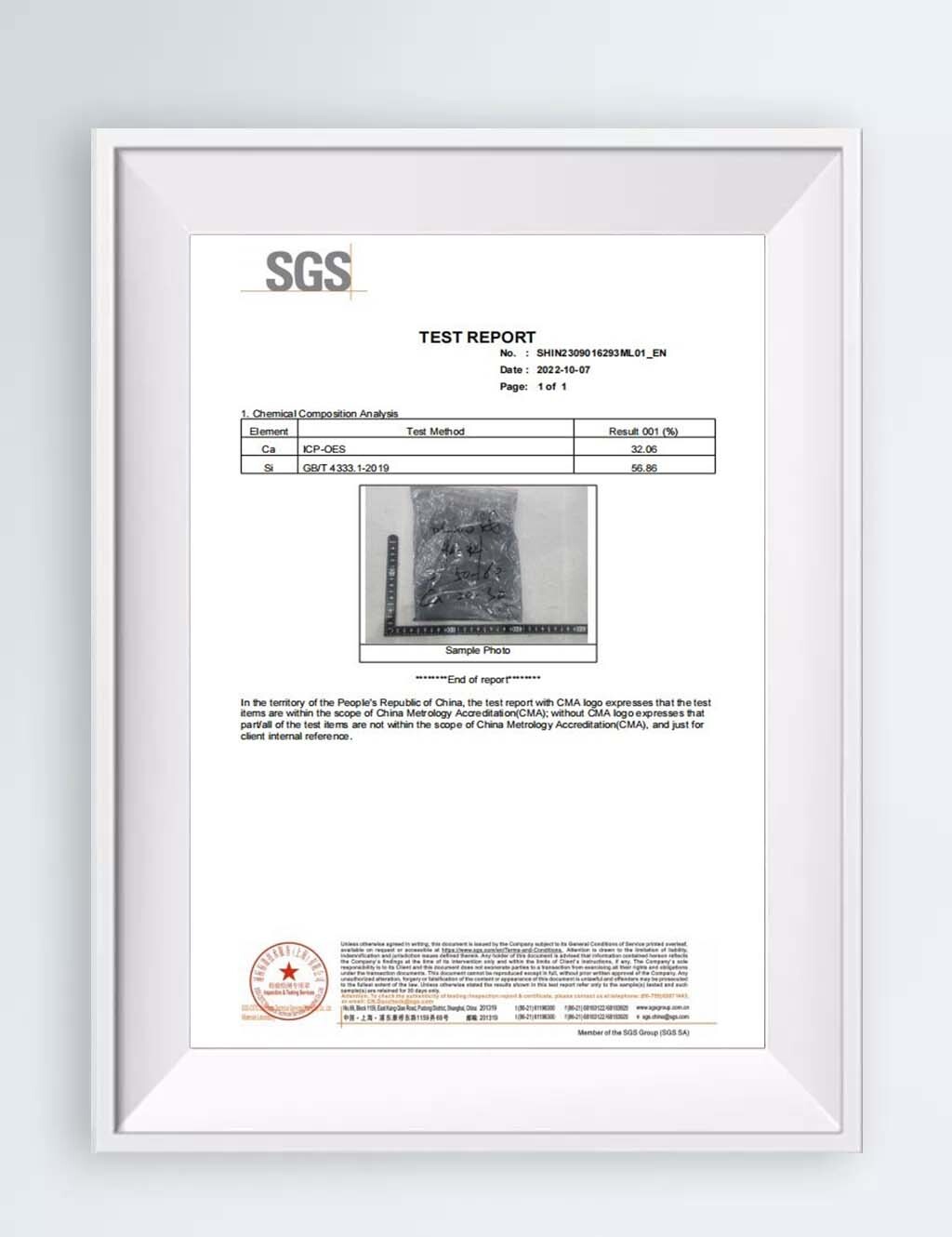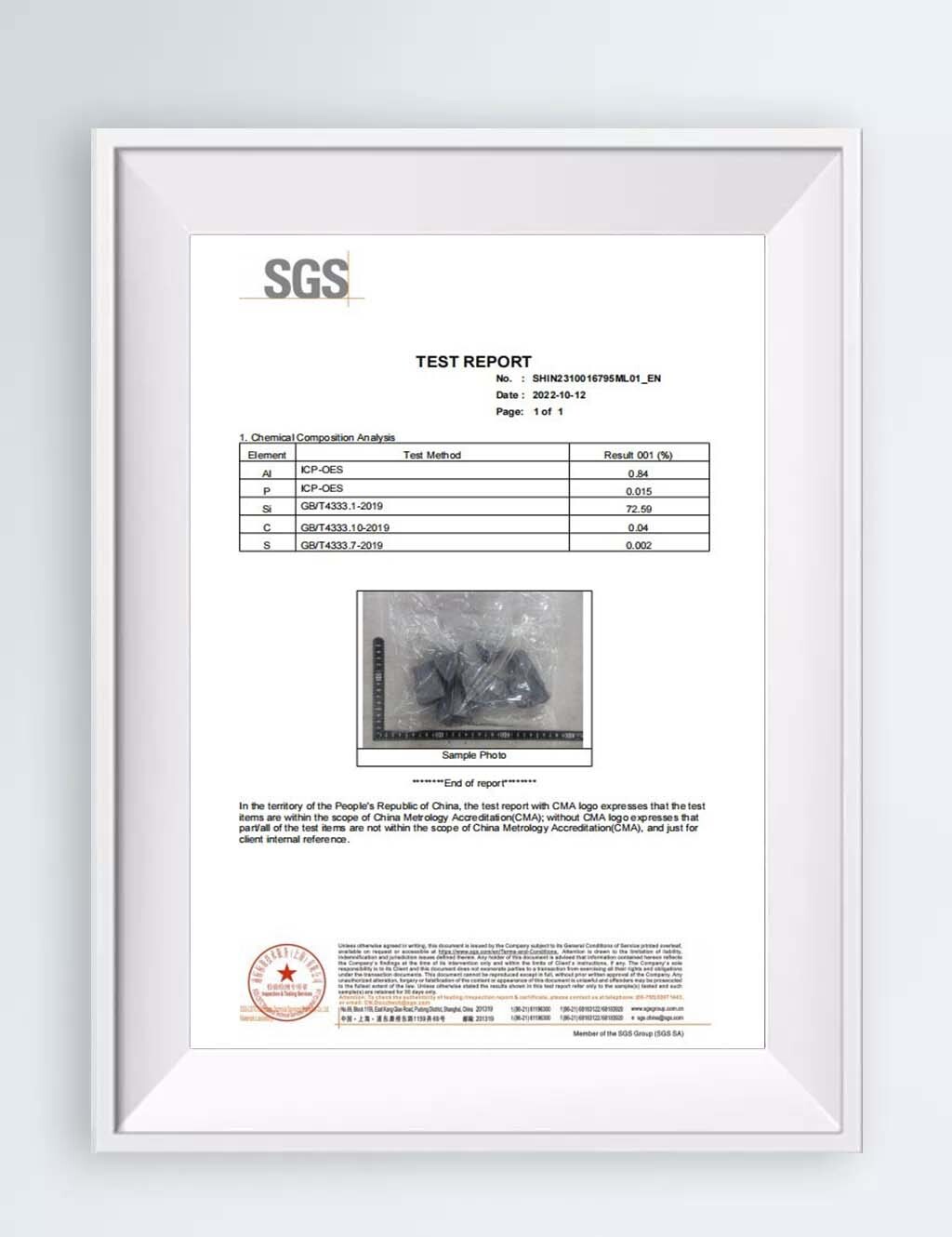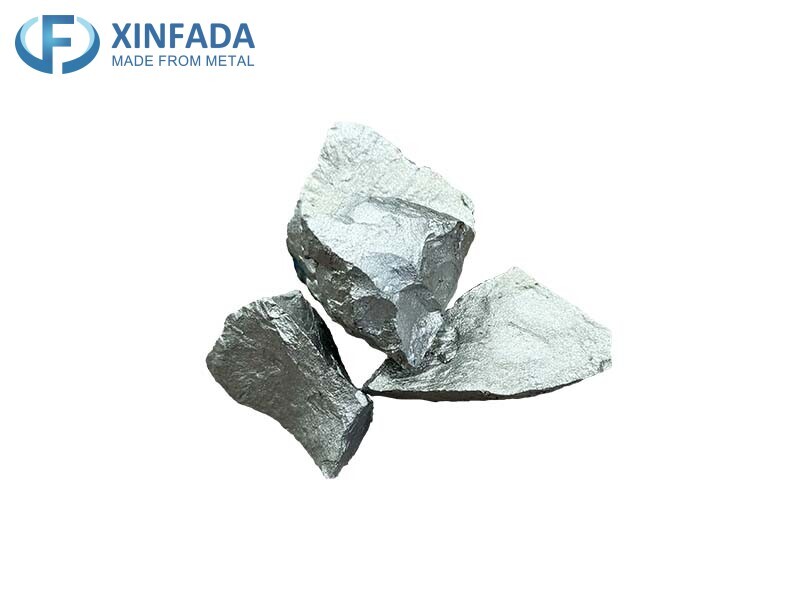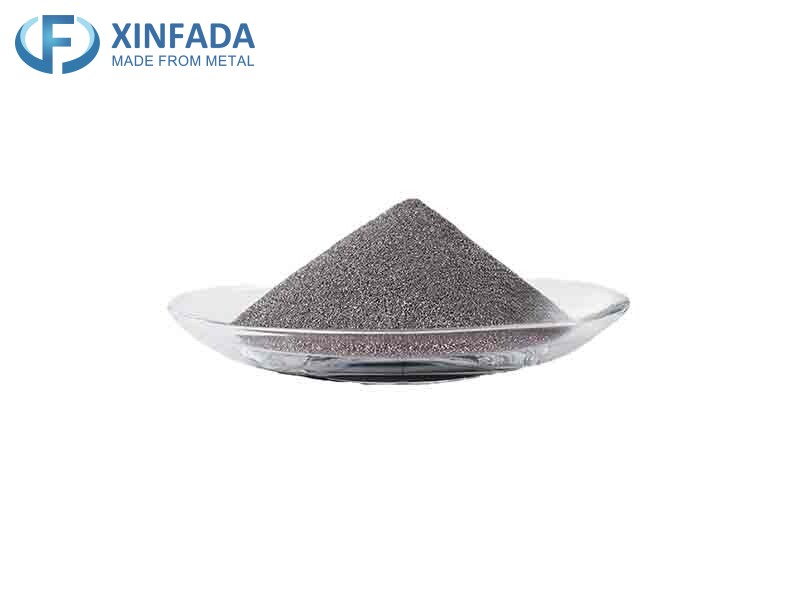
PRODUCTS
CONTACT US
Tel:+86 15763515130
Email:sales@xinfadametal.com
Add:Room 701, Building 8, Shangang Xintiandi, Industrial South Road, Jinan Area, China (Shandong) Pilot Free Trade Zone
Product Video
Product Features
An iron alloy whose main components are titanium and iron. It also contains impurities such as aluminum, silicon, carbon, sulfur, phosphorus, and manganese. Used as deoxidizer, desulfurizer, degassing agent and alloying agent in steelmaking. There are three main varieties according to the titanium content: FeTi30 (containing Ti25.0%~35.0%, Al<8.5%, Si<5.0%), FeTi40 (containing Ti35.0%~45.0%, Al<9.5%, Si<4.0%) and FeTi70 (containing Ti65%~75%, A10.5%~5%, Si<0.5%). In addition, there are a variety of titanium-containing composite alloys such as Ti-Si-Fe, Ti-B-Al-V, Ti-B-Al-Cr, Ti-Al, Ni-Ti-Al, Ti-B-Al, Ti -Cr-Al, etc., used as titanium additives.
Titanium has a great affinity with oxygen and ammonia, and is easily oxidized and nitrided to become inclusions in steel. Therefore, titanium is generally added under white slag conditions and is completely melted before steel is tapped, that is, it is usually finished within 5-15 minutes after being added. Ask for steel. Ferrotitanium should be added near the furnace door to avoid being close to the arc to reduce burning loss. If the quantity is small, there is no need to push the residue after adding. After adding ferrotitanium, staying in the furnace for too long will not only reduce the recovery rate, but also reduce the quality of the molten steel. In addition, due to the low density of ferrotitanium, it floats on the surface of slag steel when added to the furnace, and then gradually melts into the molten steel. Therefore, the recovery rate fluctuates greatly, and the influencing factors are also more complex.
The main factors affecting titanium recovery rate are:
1. Influence of the amount of slag in the furnace. The burning loss of titanium mainly occurs through slag, so when there is less slag in the furnace, the impact is small and the recovery rate is relatively stable. When the amount of slag is large and the slag is well deoxidized and has suitable fluidity, the burning loss of titanium will be small and stable. If the amount of slag is large and the slag condition is poor, the burning loss of titanium will be large and extremely unstable; if the slag is too thin, the interaction between ferrotitanium and slag will be strengthened, so the recovery rate will decrease. However, if the slag is too sticky, ferrotitanium will float on the The burning loss on the slag surface is also large, and the recovery rate is also reduced; the slag deoxidation is poor, the iron oxide content in the slag is high, the oxidation loss of titanium is large, and the recovery rate is reduced; the temperature is high, especially the high slag temperature, resulting in burning loss of ferrotitanium. The recovery rate is low. Steel containing high amounts of titanium has a high recovery rate: when steel contains a lot of other deoxidizing elements, the recovery rate is also high. For example, if aluminum and titanium are inserted before adding titanium, the recovery rate can also be improved and stabilized. The ferrotitanium is added to the top of the furnace at one time. Due to the effect of gravity, the ferrotitanium can be directly added to the molten steel, and the recovery rate is also increased.
2. The influence of titanium iron block size. As long as it is not all broken pieces, it is generally not a major factor, but if it is in powder form, the recovery rate of ferrotitanium will be greatly reduced, sometimes less than 25%.
3. Influence of joining methods. Add ferrotitanium after the slag pushing operation, even after using an iron rake to stick the slag, push the reduced slag in the furnace door area until exposed molten steel can be seen, add ferrotitanium immediately. The recovery rate (such as stainless steel) can be stabilized at 60%-65% (the slag condition and temperature have little impact). Generally, structural steel containing silicon and vanadium has a higher degree of deoxidation than stainless steel, so the recovery rate can be as high as about 70%.
Size
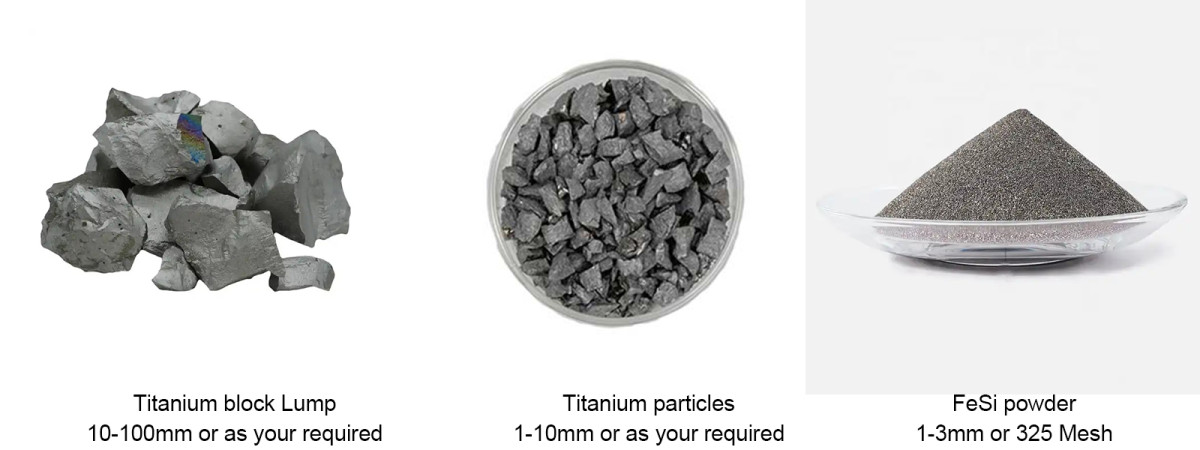
Factory Display
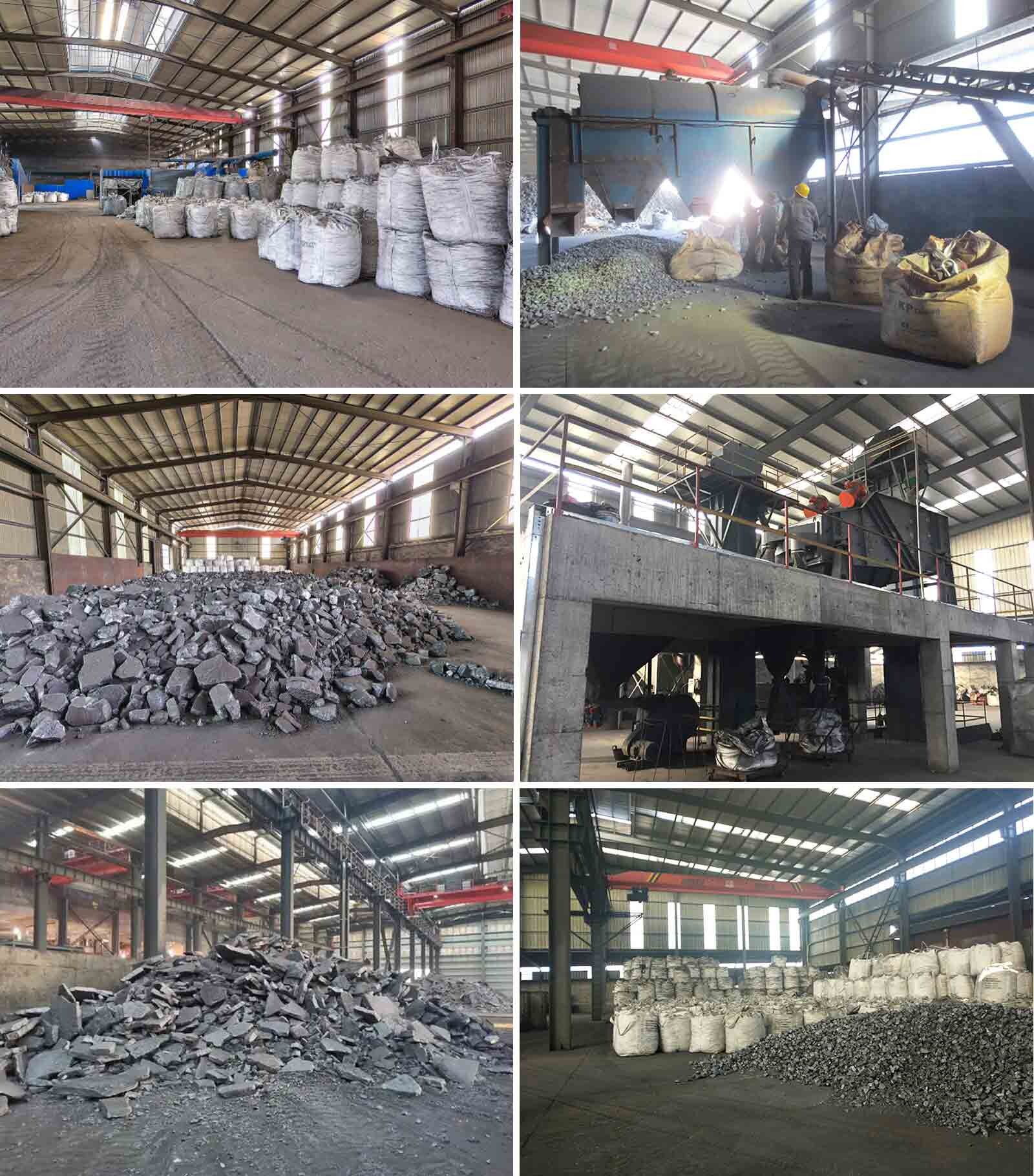
Packing And Shipping
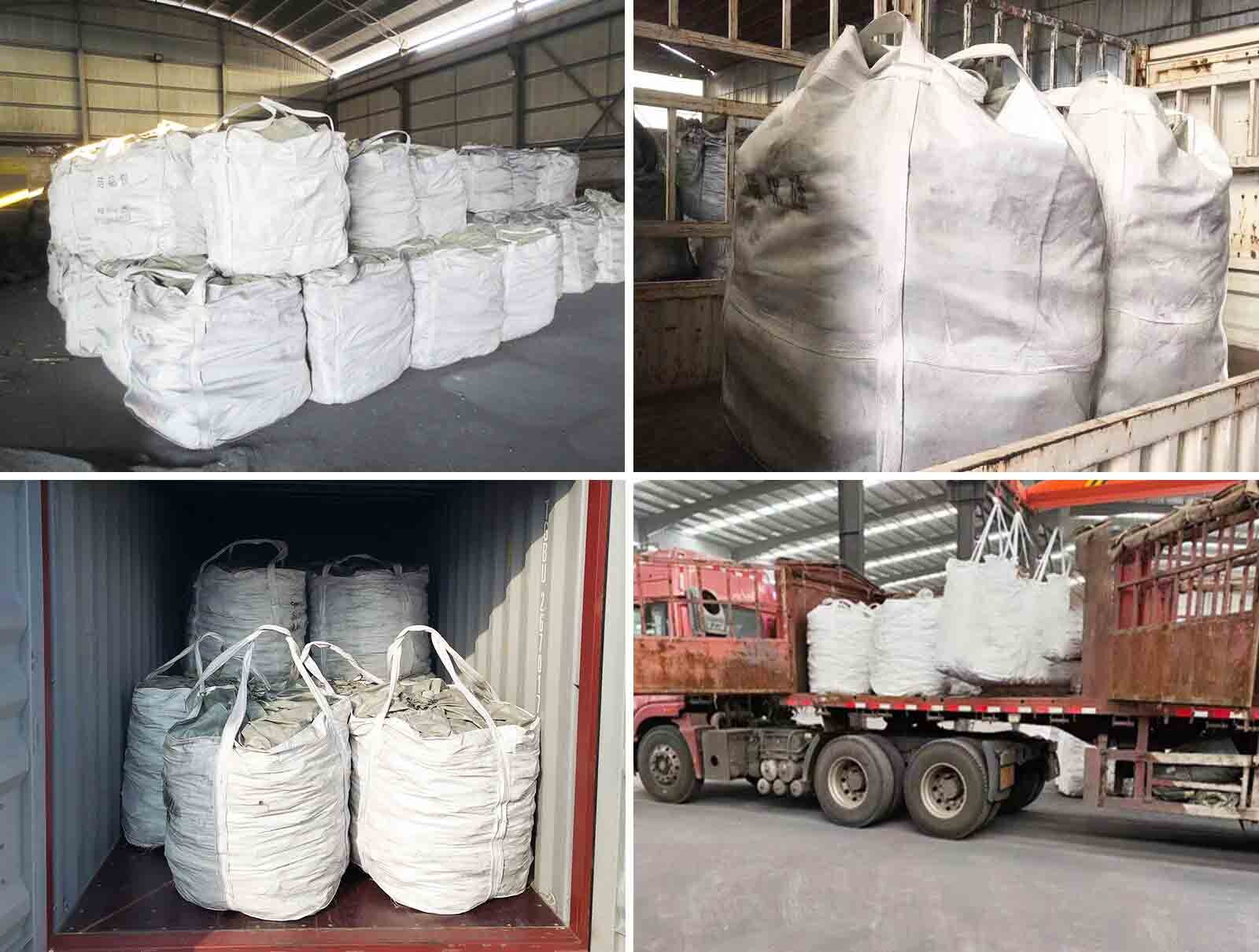
Company Qualifications
Products Recommended
FAQ
Q1: Are you trading company or manufacturer ?
A: We are a manufacturer. All our clients are from home and abroad. We look forward to your visit.
Q2: What are your strengths?
A: We have our own factory, experienced staff and professional production, processing and sales teams. Quality can be guaranteed. We have extensive experience in metallurgical steelmaking.
Q3: What is your delivery date?
A: We can ship within 7-15 days after your payment.
Q4: Is the price negotiable?
A: Yes, please feel free to contact us anytime if you have any question . And for clients who wants to enlarge market, we will do our best to support.
Q5: Can you supply free samples?
A:Yes, we can supply free samples.
Message
Please give us a message
Shandong Xinfada Metal Products Co., Ltd
Tel:+86 15763515130
E-mail:sales@xinfadametal.com
Add:Room 701, Building 8, Shangang Xintiandi, Industrial South Road, Jinan Area, China (Shandong) Pilot Free Trade Zone

